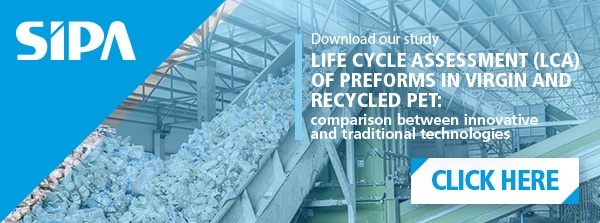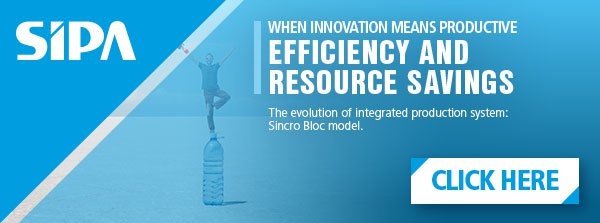Introduction
PET, to date, is a light, economical and safe material for packaging food and non-food products.
Due to the series of intrinsic characteristics, from low production costs to transparency to lightness and manageability, PET packaging has seen a gradual rise, reaching a growth rate of almost 3% per year, globally, in the last few years.
Likewise, the recycling of plastics has not significantly increased; this created many pollution problems, especially in order to protect the seas.
READ ALSO: "PET packaging material: market trends and lightweighting factor"

PET Packaging: Restrictive measures in matter of plastics adopted by the EU
Because of these facts EU, in May 2018, issued the Single Use of Plastic (SUP) directive.
The limitations announced by the European Commission concern cotton swabs, cutlery, plates and plastic straws, with the aim of collecting 90% of disposable plastic beverage bottles by 2025.
The same measures shall not apply to all products: single-use plastic products for which alternative solutions are readily available will be banned, while the use of those for which there are no valid alternatives will be limited by reducing their consumption.
Moreover, obligations relates to recycling shall also be increased. By 2025, Member States will have to recycle 90% of disposable plastic beverage bottles by introducing breakage-deposit schemes.
Features of recycled PET
Among the solutions to the limitation of PET in packaging, as we said, there is certainly the use of recycled PET.
The performance of the final material depends mainly on the efficiency of the recycling process in eliminating contaminants and impurities.
ALSO READ: " From Used to new 100% recycled PET bottles: SIPA Xtreme Renew "
Titolo H2
The headline and subheader tells us what you're offering, and the form header closes the deal. Over here you can explain why your offer is so great it's worth filling out a form for.
The headline and subheader tells us what you're offering, and the form header closes the deal. Over here you can explain why your offer is so great it's worth filling out a form for.
The headline and subheader tells us what you're offering, and the form header closes the deal. Over here you can explain why your offer is so great it's worth filling out a form for.
Halt to waste established by China
After many years in which Western countries and some Asians have shipped thousands of tons of plastic and cardboard waste to China, from 1 January 2018, the Government, led by Li Keqiang, has imposed a ban on imports of certain types of plastic waste from by other nations.
This has consequently produced serious organizational problems for numerous countries, in particular the European ones, USA and Japan, especially related to the disposal of plastic.
Reduction of PET packaging: actions already undertaken by the most virtuous companies
Even before the introduction of legislation on plastics reduction by national and supranational bodies, many manufacturing companies have already activated themselves with programs for a progressive limitation of plastic for packaging, with particular attention to PET.
For example, this is the case of Coca Cola and Pepsi Cola. Firstly, together with its partners, affirmed the commitment of producing by 2025 100% recyclable packaging, reducing the percentage of plastic, using recycled materials or through plant-based resins.
By 2030, shall also produces bottles made up of 50% recycled PET. The second goal shall affect all communities in which Coca-Cola Company operates: by 2030, for every bottle or can sold, it will undertake to encourage its collection and recycling.
Pepsi Cola has, instead, announced its goal of reaching the use of 50% recycled PET in its bottles (rPET) by 2030, with an intermediate step of 45% by 2025.
Read also: " Lightweight bottle: Reduce PET containers weight"
Features of recycled PET
Among the solutions to the limitation of PET in packaging, as we said, there is certainly the use of recycled PET.
The performance of the final material depends mainly on the efficiency of the recycling process in eliminating contaminants and impurities.
ALSO READ: " From Used to new 100% recycled PET bottles: SIPA Xtreme Renew "
Innovative processes for reusing PET and lightweighting bottles and preforms
In Japan, in Kasama, at the end of 2018 the first plant in the world for the production of PET bottles entirely made of recycled plastic flakes with a content of 100% was inaugurated.
The final quality of these packs obtained from the bottle-to-bottle principle is very high and is approved for food use.
This process, patented by an Italian company, also makes possible to save on energy costs and reduce CO2 emissions.
Alongside these revolutionary PET reuse systems, there is an increasingly advanced technology for lightweighting preforms and bottles.
In recent years, there was a general belief that the maximum was achieved in reducing thickness of PET packaging. Recently, however, further progress was made not only in reducing packages thickness but in all parts of bottle-preforms.
READ ALSO: "PET lightweighting: how to safeguard the strength of bottles"


